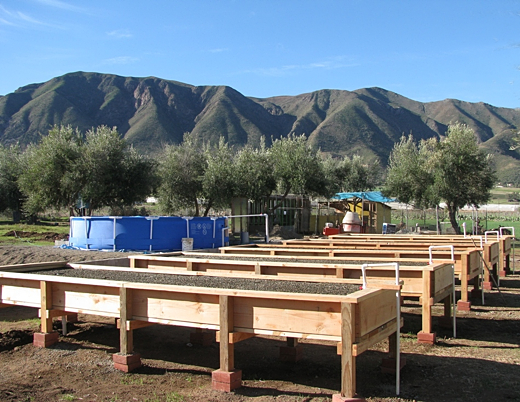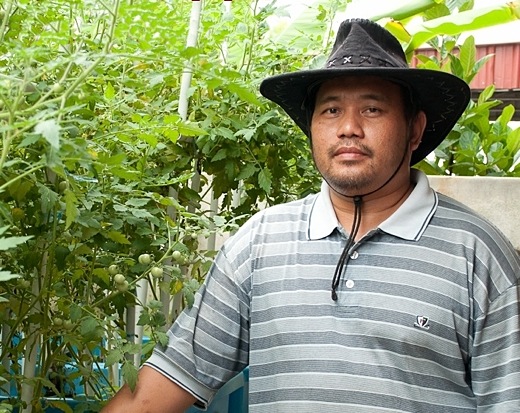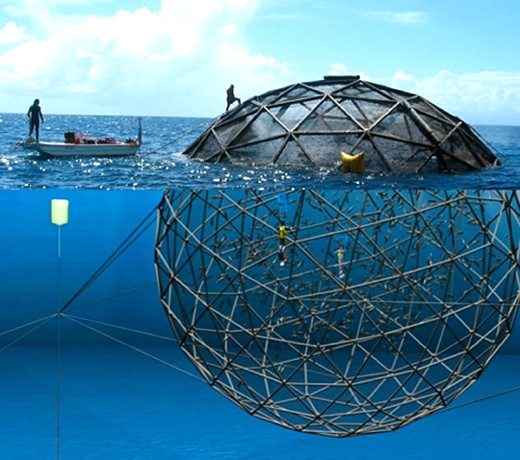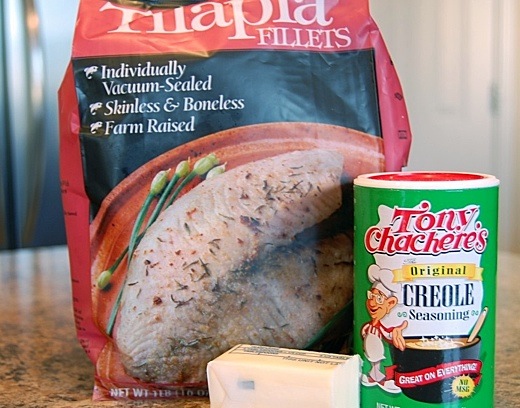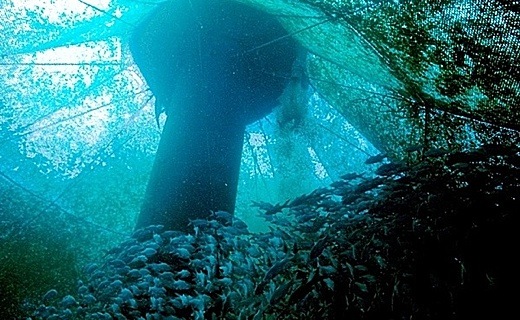SUBHEAD: A Washington family opens a hatchery in Hilo, Hawaii, to escape lethal CO2 poisoned waters.
By Graig Welch on 11 September 2013 for the Seattle Times -
(
http://apps.seattletimes.com/reports/sea-change/2013/sep/11/oysters-hit-hard/)
 Image above: Manager David Stick outside Hawaiian Shellfish, the hatchery started near Hilo by Goose Point Oyster Co. It draws water from an underground saltwater aquifer rather than directly from the ocean. From original article.
Image above: Manager David Stick outside Hawaiian Shellfish, the hatchery started near Hilo by Goose Point Oyster Co. It draws water from an underground saltwater aquifer rather than directly from the ocean. From original article.
It appears at the end of a palm tree-lined drive, not far from piles of hardened black lava: the newest addition to the Northwest’s famed oyster industry.
Half an ocean from Seattle, on a green patch of island below a tropical volcano, a Washington state oyster family built a 20,000-square-foot shellfish hatchery.
Ocean acidification left the Nisbet family no choice.
Carbon dioxide from fossil-fuel emissions had turned seawater in Willapa Bay along Washington’s coast so lethal that slippery young Pacific oysters stopped growing. The same corrosive ocean water got sucked into an Oregon hatchery and routinely killed larvae the family bought as oyster seed.
So the Nisbets became the closest thing the world has seen to ocean-acidification refugees. They took out loans and spent $1 million and
moved half their production 3,000 miles away.
“I was afraid for everything we’d built,” Goose Point Oyster Co. founder Dave Nisbet said of the hatchery, which opened last year. “We had to do something. We had to figure this thing out, or we’d be out of business.”
Oysters started dying by the billions along the Northwest coast in 2005, and have been struggling ever since. When scientists cautiously
linked the deaths to plummeting ocean pH in 2008 and 2009, few outside the West Coast’s $110 million industry believed it.
By the time scientists confirmed it early last year, the region’s several hundred oyster growers had become a global harbinger — the first tangible sign anywhere in the world that ocean acidification already was walloping marine life and hurting people.
Worried oystermen testified before Congress. A few hit the road to speak at science conferences. Journalists visited the tidelands from Australia, Europe and Korea. Washington Gov. Chris Gregoire established
a task force of ocean acidification experts, who sought ways to fight this global problem locally.
But the eight years of turmoil the Nisbet family endured trying to outrun their corroding tides offered them a unique perch from which to view debate over CO2 emissions.
And the world’s earliest victims of shifting ocean chemistry fear humanity still doesn’t get it.
“I don’t care if you think it’s the fault of humans or not,” Nisbet said. “If you want to keep your head in the sand, that’s up to you. But the rest of us need to get it together because we’re not out of the woods yet on this thing.”
To understand why the Nisbets landed in Hawaii, you first have to understand Willapa Bay.
At low tide on a crisp dawn, Dave Nisbet’s daughter, 27-year-old Kathleen Nisbet, bundled in fleece and Gore-Tex, steps from a skiff onto the glittering tide flats. Even at eight months pregnant, she is agile as a cat after decades of sloshing through mud in hip boots.
All around, employees scoop fresh shellfish from the surf and pile it in bins. Nisbet watches the harvest for a while, jokes with workers in Spanish, then clambers back into the boat.
“I’m always happy to get out here,” she whispers. “I never tire of it.”
The Nisbets were relative newcomers to shellfish.
Native Americans along the coast relied on shellfish for thousands of years. After settlers overfished local oysters, shipping them by schooner to San Francisco during the Gold Rush, farmers started raising bivalves here like crops. Now the industry in this shallow estuary and Puget Sound employs about 3,200 people and produces one-quarter of the nation’s oysters.
Kathleen’s parents bought 10 acres of tidelands near Bay Center in 1975 and started growing their own, which Dave sold from the back of his truck. Sometimes Kathleen came along.
She sipped a baby bottle and ate cookies while riding the dredge with her father. She packed boxes and labeled jars with her mother, Maureene Nisbet, and piloted a skiff by herself at age 10 through lonely channels. She keeps a cluster of shells on her desk at the family processing plant to store business cards and office supplies.
“Willapa is about oyster and clam farming,” she said. “It’s pretty much all we have.”
Her parents built their business over decades, one market at a time. They eventually pieced together 500 acres of tidelands and hired 70 people.
For a long time, business was good — until, overnight, it suddenly wasn’t.
It’s hard to imagine now how far
CO2 was from anyone’s mind when the oysters crashed.
In 2005, when no young oysters survived in Willapa Bay at all, farmers blamed the vagaries of nature. After two more years with essentially no reproduction, panic set in. Then things got worse.
By 2008, oysters were dying at Oregon’s Whiskey Creek Hatchery, which draws water directly from the Pacific Ocean. The next year, it
struck a Taylor Shellfish hatchery outside Quilcene, which gets its water from Hood Canal. Owners initially suspected bacteria, Vibrio tubiashii. But shellfish died even when it wasn’t present.
Willapa farming is centered on the nonnative Pacific oyster, which was introduced from Japan in the 1920s. Some farms raise them in the wild, but that’s so complex most buy oyster seed from hatcheries to get things started.
The hatcheries spawn adult oysters, producing eggs and then larvae that grow tiny shells. When the creatures settle on a hard surface — usually an old oyster shell — these young mollusks get plopped into the bay and moved around for years until they fatten up.
Only a handful of hatcheries supply West Coast farmers, including Whiskey Creek and Taylor Shellfish, which sells seed only after meeting its own needs. So each spring, Kathleen’s parents put an order in with Whiskey Creek until the mid-2000s, when that option vanished.
“The hatchery had a long waiting list of customers and no seed, and we had a small window of time to get it into the bay,” Dave Nisbet recalled. “They had nothing.”
Whiskey Creek hatchery closed for weeks at a stretch. Production at Taylor Shellfish was off more than 60 percent. And more than just regular customers needed help.
With wild oysters not growing at all, suddenly hundreds of growers needed shellfish larvae. The entire industry was on the brink. Oyster growers from Olympia to Grays Harbor worried that in a few years’ time they would not be able to bring shellfish to market.
Nisbet made frantic calls, but could not find another source. He worked closely with Whiskey Creek, but owners there were stumped. Nisbet knew his business was in trouble.
“It’s like any other farm,” Dave Nisbet said. “If you don’t plant seed, sooner or later you don’t have crops. And there wasn’t enough seed to go around.”
In 2008, Kathleen Nisbet fretted about the prospect of laying off people her family had employed since she’d been in diapers. She feared that years of bad or no production could become the new normal.
It was really tough, as a second generation, to come in knowing the struggles we were going to have,” she said. “It’s really hard on a business when you’ve built something for the past 30 years and you have to take your business and basically cut it in half.”
But unless the family found a solution, they soon would have nothing to sell.
And no one, anywhere, could tell them what was wrong.
“I thought, ‘What are we going to do?’ ” Dave said.
Then the oyster growers met the oceanographers.
Corrosive waters rise to surface
Dick Feely, with the National Oceanic and Atmospheric Administration, had measured ocean chemistry for more than 30 years and by the early 2000s was noting a dramatic change off the West Coast.
Low pH water naturally occurred hundreds of feet down, where colder water held more CO2. But that corrosive water was rising swiftly, getting ever closer to the surface where most of the marine life humans care about lived.
So in 2007, Feely organized a crew of scientists. They measured and tracked that water from Canada to Mexico.
“What surprised us was we actually saw these very corrosive waters for the very first time get to the surface in Northern California,” he said.
That hadn’t been expected for 50 to 100 years. And that wasn’t the worst of it.
Because of the way the ocean circulates, the corrosive water that surfaces off Washington, California and Oregon is the result of CO2 that entered the sea decades earlier. Even if emissions get halted immediately, West Coast sea chemistry — unlike the oceans at large — would worsen for several decades before plateauing.
It would take 30 to 50 years before the worst of it reached the surface. Oregon State University scientist Burke Hales once compared that phenomenon to the Unabomber mailing a package to the future. The dynamite had a delayed fuse.
Feely
published his findings in 2008. Shellfish growers took note. Some recalled earlier studies that predicted juvenile oysters would someday prove particularly sensitive to acidification. The oyster farmers invited Feely to their annual conference.
Feely explained that when north winds blew, deep ocean water was drawn right to the beach, which meant this newly corrosive water probably got sucked into the hatchery. That same water also flowed into the Strait of Juan de Fuca and made its way to Hood Canal.
The oyster industry pleaded with Congress, which supplied money for new equipment. Over several years, the hatcheries tested their water using high-tech pH sensors. When the pH was low, it was very low and baby oysters died within two days. By drawing water only when the pH was normal, shellfish production got back on track.
“They told us it was like turning on headlights on a car — it was so clear what was going on,” Feely said.
It wasn’t until 2012 that Feely and a team from Oregon State University
finally showed with certainty that acidification had caused the problem. Early this summer OSU professor George Waldbusser demonstrated precisely how.
The oysters were not dissolving. They were dying because the corrosive water forced the young animals to
use too much energy. Acidification had robbed the water of important minerals, so the oysters worked far harder to extract what they needed to build their shells.
Waldbusser still is not entirely sure why acidification has not yet hit other oyster species. It could be because other species, such as the native Olympic, have evolved to be more adaptable to high CO2, or because they rear larvae differently, or because they spawn at a time of year when corrosive water is less common. It could also be that acidification is just not quite bad enough yet to do them harm.
Either way, by then, the Nisbets had moved on. They had experimented with growing oysters in Hawaii and now had their own hatchery outside Hilo.
Small fixes, big worriesDavid Stick opened a spigot from a tub that resembled an aboveground pool. He let water wash over a fine mesh screen. It was a muggy Hawaii morning and the Nisbets’ hatchery manager was straining oyster larvae.
When the tiny bivalves are big enough to produce shells, Stick mails them back to Washington. There, Kathleen’s crew plants them in the bay.
Instead of relying on the increasingly corrosive Northwest coast, the family built a hatchery that drew on something else — a warm, underground, saltwater aquifer. That water source is not likely to be affected by ocean chemistry changes for many decades, if at all.
But that doesn’t mean there’s nothing more to fear.
For now, no one else has taken as dramatic a step as the Nisbets. The Northwest industry is getting around the problem. Hatcheries have changed the timing of when they draw in water. Scientists installed ocean monitors that give hatchery owners a few days notice that conditions will be poor for rearing larvae.
Growers are crushing up shells and adding chemicals to the water to make it less corrosive. Shellfish geneticists are working to breed new strains of oysters that are more resistant to low pH water.
But no one thinks any of that will work forever.
“I do not think people understand the seriousness of the problem,” Stick said. “Ocean acidification is going to be a game-changer. It has the potential to be a real catastrophe.”
At the moment, the problem only strikes oysters at the very early stages of their development, within the first week or so of life. Once they have built shell and are placed back on the tide flats, they tend to deal better with sea chemistry changes.
But how long will that be the case? How would they respond to changes in the food web?
“The algae is changing,” Stick said. “The food source that everything depends on is changing. Will things adapt? We don’t know. We’ve never had to face anything like this before.”
An urgency to educateWith one young son, and a baby on the way, it’s been impossible for Kathleen not to think about her own next generation.
“Thank God my dad took a proactive measure to protect me,” she said. “If he wouldn’t have done that, I would suffer and my son would suffer.”
She thinks a lot about the need for school curricula and other efforts to get kids and adults thinking and learning about changing sea chemistry.
“I don’t think that our government is recognizing that ocean acidification exists,” she said. “I don’t think society understands the impacts it has. They think ocean acidification … no big deal, it’s a huge ocean.”
But the reality is, over the next decade, the world will have to make progress tackling this issue.
“We’re living proof,” Nisbet said. “If you ignore it, it’s only going to get worse. Plain and simple: It will get worse.”
.





